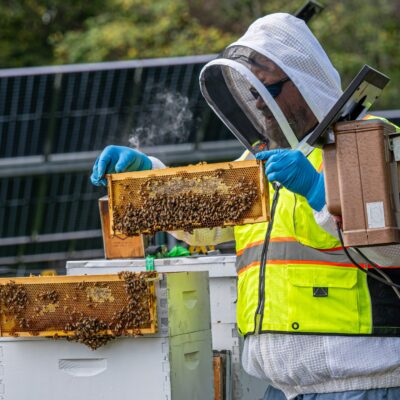A new study conducted by UVA’s Weldon Cooper Center for Public Service reveals that in 2006, Virginia agriculture and forestry contributed about $79 billion to the Commonwealth’s economy and supported more than a half-million jobs.
The study was commissioned by the Virginia Secretary of Agriculture and Forestry to highlight the impact of these two seemingly marginalized sectors on the state’s economy. Virginia has nearly 21 million acres of farmland, pasture and forest and, according to 2006 statistics, an estimated 46,000 farms.
If the study were to take into account other industries, primarily recreational ones such as agritourism, wine tourism, ecosystem services, and hunting and commercial fishing, the total impact would be several billion dollars more than reported. The study also found that Virginia’s farms generated approximately $2.7 billion in cash receipts and harvested timber production generated close to $350 million.
Locally, Albemarle County can pride itself with a fairly significant agriculture industry, counting on at least one lumber mill and ample timber production, says Terance Rephann, researcher and author of the study.
“[The farmers] can’t really compete, because of the high cost of living and labor in the area,” he says. Rephann adds that farm acreage in Albemarle is declining for more “growth in specialty farms,” such as recreational equine enterprises. Rephann says the economies of nearby counties are much more dependent on farming and forestry than is Albemarle. The study found that one out of four jobs in the Danville area related to these sectors, primarily in the wood product industry.
In 2006, of the 115,476 jobs in the City of Charlottesville and Albemarle County combined, 1,001 people, or 0.9 percent, were employed in the farming section, while 441 found work in forestry and fishing.
In order to remain competitive, agriculture and forestry need to constantly improve and update productivity by implementing greater high-tech specialization. Recent growth in bio-fuels, particularly of ethanol production, has contributed to a surge in the price of corn, substitute feed crop and grain.
Virginia plays an important role in several markets across the country: The state is the third biggest producer of fresh tomatoes and fifth for tobacco. Apples, potatoes, eggs and poultry are other significant commodities. According to the study, the U.S. Department of Commerce reported that in 2006, Virginia mills produced 1.6 billion board feet of lumber, making the state the third largest producer after Pennsylvania and Tennessee.
C-VILLE welcomes news tips from readers. Send them to news@c-ville.com.





